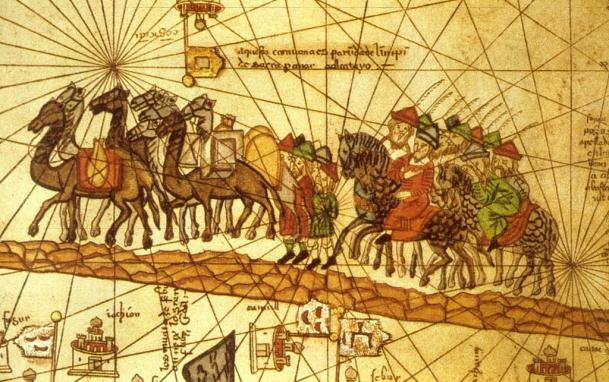古代“丝绸之路”上的动物使者

The Silk Road once served as a bridge between the economy, trade and culture of east and west. Animals are really an essential part of the history of the Silk Road. They played an important role in the Silk Road transportation.
Horses on the Silk Road
The horse, in ancient China, has always been a symbol of national vitality and strength. The most well-known example to illustrate the importance of the horse in the history of the Silk Road is the Mongol Empire. The Mongol horses, though not large, were strong and could survive in winter conditions because of their ability to find food under the ice and snow covering the steppes (大草原).
Camels on the Silk Road
Important as horses were, the camel was arguably of far greater significance in the history of the Silk Road. Bactrian camels with two humps (驼峰) and two coats of hair were commonly used on the Silk Road to carry goods. They could be employed in high mountains, cold steppes and deserts. Bactrian camels can go a week without water and a month without food. They can endure extreme hot and cold and travel long periods of time without water.
Caravans (大篷车) on the Silk Road
The process of travelling the Silk Roads developed along with the roads themselves. In the Middle Ages, caravans consisting of horses or camels were the standard means of transporting goods across land. Caravanserais, large guest houses or inns designed to welcome travelling merchants, played a vital role in facilitating the passage of people and goods along these routes. Found along the Silk Roads from Turkey to China, they provided not only a regular opportunity for merchants to eat well, rest and prepare themselves in safety for their onward journeys, and also to exchange goods, trade with local markets and buy local products, and to meet other merchant travelers, and in doing so, to exchange cultures, languages and ideas.
原创编写 版权所有 侵权必究! 每日更新 个性化阅读 英语飙升!